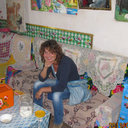Clinical and mycological evaluation of an herbal antifungal formulation in canine Malassezia dermatitis.
キーワード
概要
OBJECTIVE
Malassezia pachydermatis is a common cause of more widespread dermatitis in dogs (CMD). Recurrences are common, and this disorder can be very troubling for both dogs and for the pet owner.
METHODS
The treatment of 20 dogs affected by dermatitis due to M. pachydermatis, with Malacalm(®), a commercially available mixture consisting of essential oils (Citrus aurantium 1%, Lavandula officinalis 1%, Origanum vulgare 0.5%, Origanum majorana 0.5%, Mentha piperita 0.5% and Helichrysum italicum var. italicum 0.5%, in sweet almond oil and coconut oil) is reported. The effectiveness of the whole mixture, of component essential oils and of their more represented compounds against clinical isolates was evaluated by a microdilution test. Twenty animals were topically administered the mixture twice daily for 1 month. Ten animals were treated with a conventional therapy based on ketoconazole 10mg/kg/day and chlorhexidine 2% twice a week for 3 weeks. At the end of both treatments animals significantly improved their clinical status. Adverse effects were never noticed. Follow-up visit performed on day 180th allowed to observe a recurrence of clinical signs in all the subjects treated conventionally, while not significant clinical changes were referred in dogs treated with Malacalm(®). The overall MIC value of Malacalm(®) was 0.3%. O. vulgare showed the lowest minimum inhibitory concentrations (MIC), being active at 0.8%, followed by M. piperita (1%), O. majorana (1.3%), C. aurantium (2%) and L. officinalis (4%) while H. italicum did not yield any antimycotic effect up to 10%. Active major compounds were thymol, carvacrol, p-cymene, 1,8-cineol, limonene and menthol.
CONCLUSIONS
The phytotherapic treatment achieved a good clinical outcome, and no recurrence of skin disorders on day 180th was recorded. This herbal remedium appeared to be a safe tool for limiting recurrences of CMD.



